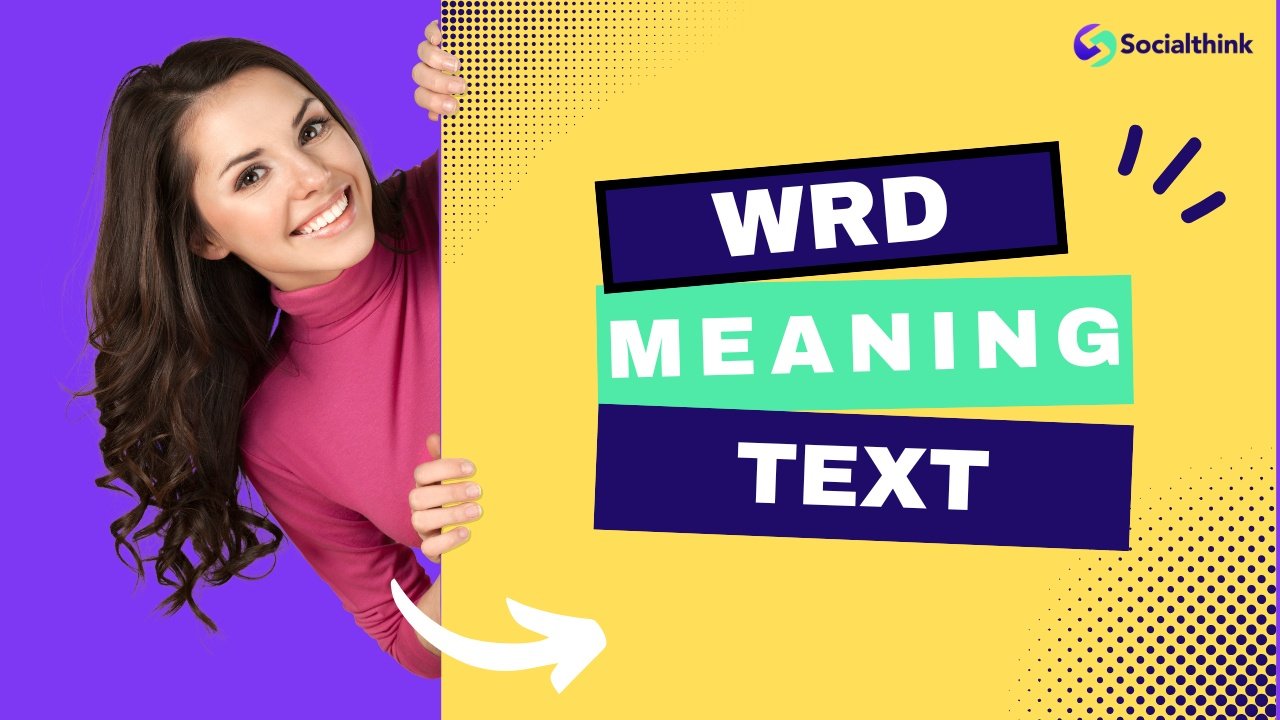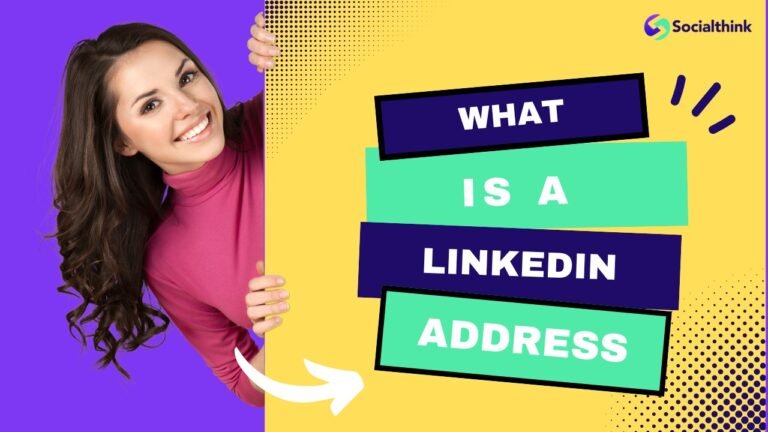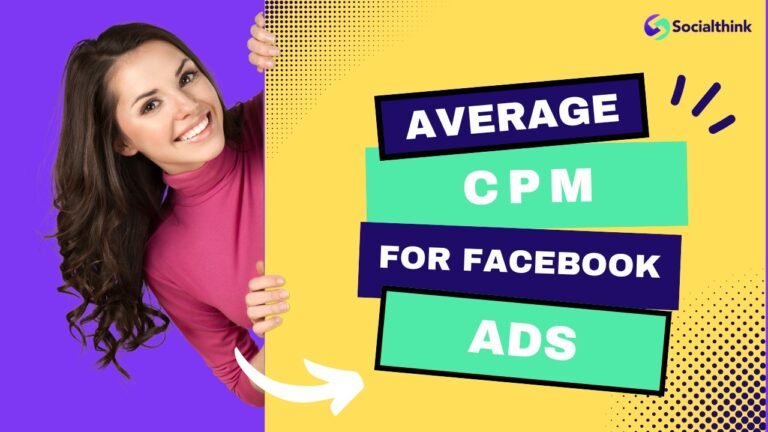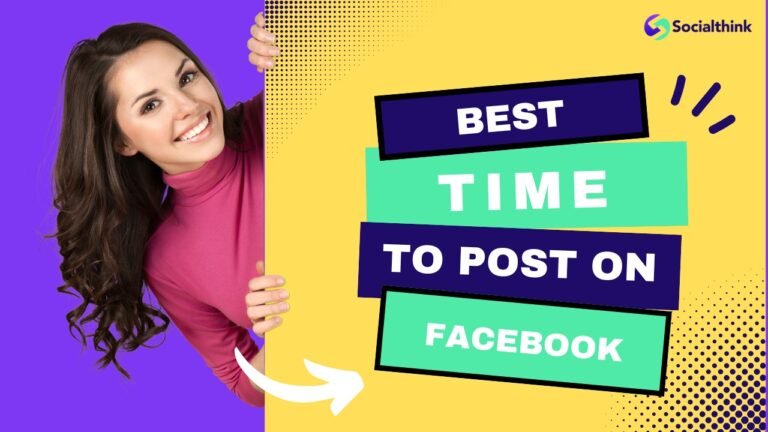WRD Meaning in Text: What It Means and How to Use It?
Have you ever been in the middle of a text messaging chat and received the reply “wrd“?
If so, you might have paused for a moment. Is it a typo? An acronym you don’t know?
In the fast-moving world of social media and online communication, new slang words seem to pop up every day. At Social Think, we specialize in making sense of these trends.
Our work involves deep social media strategy, analytics, and insights that help businesses connect with their audiences. A big part of that connection is understanding the language people use, right down to the three-letter acronyms.
Keeping up with internet jargon can feel like a full-time job.
What’s popular on TikTok might be different from the slang used on Instagram or in a private chat. This article will clear up the confusion around one specific, common piece of text slang: wrd.
We will break down what it means, where it came from, and how you can use it confidently in your own texting.
Understanding these small details of communication is key to being effective online, whether you’re chatting with friends or building a brand. So, the next time you see wrd in a message, you’ll know exactly what to do.
What Does WRD Mean? The Quick Answer
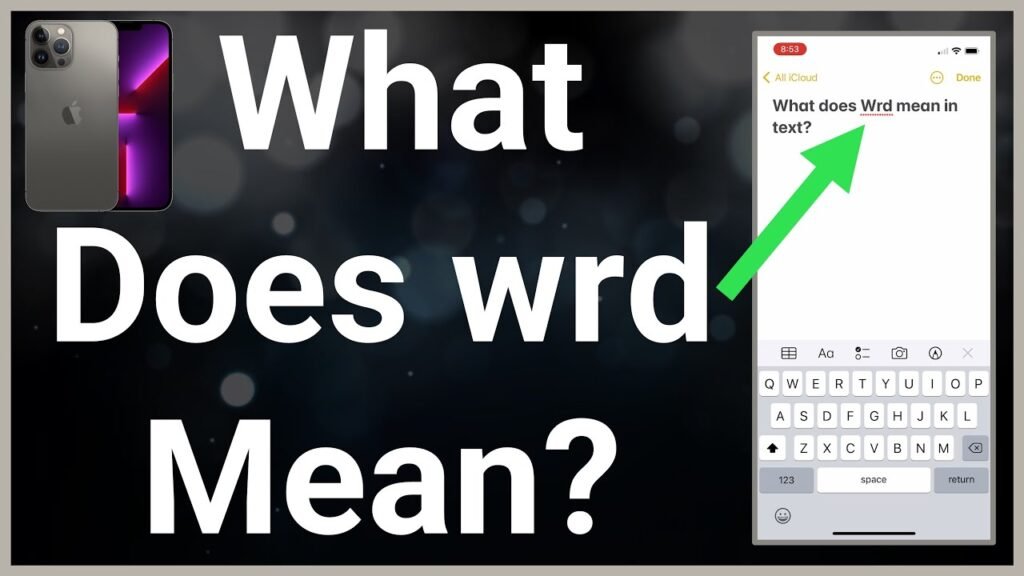
Let’s get straight to the point. When you see “wrd” in a text, it’s almost always a shortened version of the word “word.”
But in the context of slang, “word” means more than just a group of letters. It’s used to show agreement, to say “I understand,” or to confirm that something is true.
Think of it as a cool, casual way of saying “I agree,” “For real,” or “Okay, I hear you.”
It is a simple yes that many people use. It has become common in texting and on social media. People use it on apps like Snapchat and TikTok.
The Primary Meaning: “Word” as an Affirmation
The most common use of wrd is to affirm what someone else has just said. It signals that you believe them and agree with their statement.
Imagine a friend texts you, “That concert last night was incredible.”
Replying with “wrd” is like saying, “You’re telling the truth, I completely agree.” It’s a quick, informal nod of approval. This usage carries a sense of authenticity; it’s not just a robotic “okay,” but a genuine acknowledgment. It implies that what was said is a fact.
This simple acronym packs a punch, conveying agreement and truthfulness in just three letters, making it a powerful piece of slang.
Understanding “WRD” As Agreement Or “I Understand”
Beyond just affirming a truth, wrd is also used to show that you’ve received and understood a piece of information.
It functions as a laid-back “got it” or “I’m on the same page.”
For example, if someone sends you instructions, like “Let’s meet at the corner at 8 PM,” a reply of “wrd” means “Okay, I understand the plan.”
It’s less about deep agreement and more about simple acknowledgment.
This makes it a versatile tool in any informal chat. It’s a step above a simple thumbs-up emoji because it uses language, but it’s just as quick and efficient.
It’s one of those slang words that, once you get it, you’ll see its utility everywhere.
How to Use WRD In A Text Conversation (With Examples)

Now that you know the wrd meaning, let’s look at how it plays out in real-life text conversations. The context of the chat will guide its specific flavor, whether it’s expressing agreement, acknowledging information, or asking a question.
Seeing it in action is the best way to get comfortable with this particular text slang.
Using WRD to Agree With A Statement
This is the most frequent use case for wrd. You use it when you share the same opinion as the person you’re texting. It’s a fast way to build rapport and show you’re on the same wavelength.
Example 1:
- Friend 1: I can’t believe how difficult that math test was. Omg.
- Friend 2: wrd, I think I failed.
Example 2:
- Person A: This new update on Instagram is so annoying.
- Person B: wrd.
In both cases, wrd is used to say “I totally agree” or “You said it.” It’s a quick confirmation of a shared feeling or opinion.
Using WRD to Acknowledge Information
Sometimes, you just need to let the other person know you’ve seen their message and understood it. It’s a casual confirmation that doesn’t require a full sentence.
This is especially common when making plans.
Example 1: (From a guy making plans)
- Alex: Hey, I’m running about 10 mins late, btw.
- Ben: wrd, no worries. See you soon.
Example 2:
- Mom: Don’t forget to take out the trash before you leave!
- You: wrd
Here, wrd simply means “Okay, I’ve got the message.” It’s efficient and signals that no further explanation is needed. It’s a modern replacement for “Roger that” in the world of SMS and instant messaging.
Using “WRD?” As A Question For Confirmation
This is a slightly different use. By adding a question mark, wrd transforms from a statement into a question. You’re essentially asking, “Really?“, “For real?“, or “Are you serious?” It can express surprise, disbelief, or simply a request for confirmation.
Example 1:
- Friend 1: I heard they’re giving away free pizza in the student center.
- Friend 2: wrd?
Example 2:
- Friend 1: I just got tickets to the festival!
- Friend 2: wrd? ftw!
In this form, wrd? asks for verification. The person is checking if the information is true before getting too excited. It’s a useful way to show you’re engaged in the chat but need a little more certainty.
The Origin and Context of “WRD”
Like many popular slang words, wrd didn’t just appear out of thin air. Its history is rooted in real-life culture and evolved as communication moved onto the internet.
Understanding its background helps explain why it’s used the way it is today on social media.
From Hip-Hop Culture to Texting Slang
The slang use of “word” originated in the African American Vernacular English (AAVE) of New York City during the 1980s, becoming heavily associated with hip-hop culture. The phrase “Word up!” was used as an exclamation of agreement and truth. It was a way to say, “What you are saying is true, and I respect it.” Sometimes, it was shortened to just “Word.” As hip-hop culture spread globally, so did its language.
When the internet and text messaging became the primary modes of communication for younger generations, this slang naturally made the jump. The abbreviation to wrd was a logical next step for fast texting and character limits on platforms like early Twitter.
Who Uses This Acronym? (Generational and Cultural Context)
Primarily, wrd is used by younger generations—Millennials and especially Gen Z—who grew up with the internet and texting as their main form of communication. For them, acronyms like wrd, idk (I don’t know), and btw (by the way) are second nature. It’s part of a linguistic shortcut system designed for speed and informality. Older generations might find it confusing, viewing it as lazy or improper grammar. However, within the cultural context of informal online chat, it’s perfectly normal and efficient. It’s a marker of being “in the know” with current internet culture.
Platforms Where You’ll Commonly See WRD (iMessage, TikTok, Instagram)
You are most likely to encounter wrd on platforms that prioritize quick, informal, and often mobile-first communication.
- Text Messaging (iMessage, SMS, WhatsApp): This is the natural habitat for wrd, where speed is essential.
- TikTok: In the comments section of TikTok videos, wrd is frequently used to agree with the video’s content or another commenter’s opinion.
- Instagram: You’ll see it in DMs and comment threads on Instagram, especially among younger users.
- Snapchat: The ephemeral and casual nature of Snapchat makes it a prime location for this type of slang.
- Twitter: While less common now with expanded character limits, it still appears in quick replies.
You are less likely to see it on more professional platforms like LinkedIn or in formal emails, and you’ll rarely see it on Facebook among older user bases.
Variations and Similar Texting Acronyms
The world of text slang is rich and varied. wrd has its own family of similar terms and common misspellings.
Knowing these variations helps you get a better feel for the nuances of online chat.
Common Misspellings and Typos
Because it’s typed quickly, you might see typos like “wrd,” “wd,” or even just “w.” Most people will understand what you mean from the context. The meaning doesn’t drastically change with these minor variations. The goal is speed, not perfect spelling.
Slang With Similar Meanings (E.g., “Bet,” “FR,” “IKR”)
wrd is part of a larger group of affirmative slang. Here’s how it compares to others:
- Bet: This is very similar to wrd and is often used interchangeably. However, “bet” can sometimes carry a more enthusiastic, “challenge accepted” or “it’s on” vibe. If wrd is a calm nod, “bet” is a fist bump.
- FR (For Real): fr is used to emphasize truth, either in a statement (“This is the best, fr”) or as a question to express disbelief (“fr?”). It’s very close to wrd, but often focuses more on the factual nature of the statement.
- IKR (I Know, Right?): ikr is used specifically when you strongly agree with an opinion and share the same feeling. It implies a sense of shared experience, almost as if you were about to say the same thing.
Other related acronyms include imo (in my opinion), idc (I don’t care), nvm (nevermind), and fwiw (for what it’s worth), which all help to add tone and context to a text.
How WRD Differs From “Okay” or “K”?
This is an important distinction. While “okay” and wrd can both be used to acknowledge information, their tones are very different.
- Okay: This is a neutral, standard response. It’s polite and clear.
- wrd: This is more informal and casual. It suggests a closer, more relaxed relationship between the people in the chat.
- K: This one-letter response is famously risky. In text etiquette, receiving a “k” can feel cold, dismissive, or passive-aggressive, as if the person is annoyed or trying to end the conversation. Wrd, on the other hand, feels more engaged and positive.
If you want to acknowledge something casually but warmly, wrd is a much safer choice than “k.”
How to Respond When Someone Texts You “WRD”?
So, the next time the acronym wrd pops up on your screen, what do you do? Your response depends on whether it was used as a statement of agreement or as a question.
Replying to WRD As A Statement
If someone replies to your message with wrd, they are agreeing with you or acknowledging your point. In most cases, no response is necessary. They are simply confirming they are on the same page. You can just continue the conversation as planned.
Example:
- You: The movie starts at 8, so let’s meet at 7:45.
- Friend: wrd
- You: Cool, I’ll grab the tickets.
Alternatively, you could reply with an emoji like a thumbs-up (👍) or an “okay” hand sign (👌) to close the loop, but it’s often not needed.
Answering When Someone Asks “WRD?”
When wrd? is used as a question, the person is asking for confirmation or expressing disbelief. Your job is to clarify.
Example:
- You: I passed the exam with an A!
- Friend: wrd?
- You: Yes, fr! I can’t believe it either.
Here, a simple “yes,” “yep,” or even another slang term like fr (for real) is the perfect response. You are confirming that your initial statement was true. The conversation can then proceed based on that confirmation. God, it feels good to share good news!
Other Meanings of WRD
While in the context of texting and social media, wrd almost always means “word,” the acronym WRD can stand for other things in different, more formal contexts. It’s highly unlikely you’ll see these in a chat, but it’s good to be aware of them.
- Wireless Reading Device: In a tech or library setting, WRD could refer to a device like a Kindle or other e-reader.
- World Radio Day: WRD is the official abbreviation for this international day observed on February 13th.
- White Resource Data: This is a much more obscure and technical term you might find in specific databases or research papers.
- White Ribbon Day: Also known as the International Day for the Elimination of Violence against Women, this is another formal use of the acronym.
Context is everything. If you’re on TikTok, it’s not about World Radio Day. If you’re reading a United Nations report, it’s not about agreeing with a friend.
FAQ’s:
Does ‘WRD’ Change Meaning Based On Context?
Absolutely. While the core meaning is “word” (agreement/truth), its flavor changes. A simple wrd. feels final and affirmative. wrd! with an exclamation mark is more enthusiastic. wrd? with a question mark completely changes it into a question of disbelief.
The surrounding conversation and your relationship with the person determine the precise tone.
Is ‘WRD’ Appropriate in Professional Messages?
No, it is not. wrd is strictly informal slang. Using it in a professional email, a message to a boss, or in any formal business communication would come across as unprofessional and possibly disrespectful.
Stick to clear, full words like “I agree,” “Understood,” or “Thank you for the confirmation” in those settings.
What Are Some Creative Alternatives to Using ‘WRD’?
If wrd feels too repetitive, you can switch it up with other slang or clear phrases. Some great alternatives include:
- Bet: For enthusiastic agreement.
- FR or For real: To emphasize truth.
- I hear that: A slightly more conversational way to agree.
- Facts: A very direct way to say something is true.
- No cap: Another slang term meaning “no lie.”
- Sounds good: A clear and positive acknowledgment.
Conclusion
So, here it is. The wrd meaning is simple. It is a quick and casual way to type “word.” This shows agreement or acknowledgment. This slang comes from hip-hop culture. It has a strong place in fast chats on TikTok, Instagram, and text apps.
While it is important to keep this slang out of formal talks, knowing them helps connect with others in casual spaces.
At Social Think, we know that communication is more than just data points; it’s about understanding the nuances of human interaction, right down to the emojis and slang people use. This knowledge allows brands to engage in a way that feels genuine.
If you want to harness the power of social media by truly understanding your audience’s language and behavior, our team is here to help with strategy and analytics that drive real results.
Ready to make sense of the social conversation? Get in touch with Social Think today.

